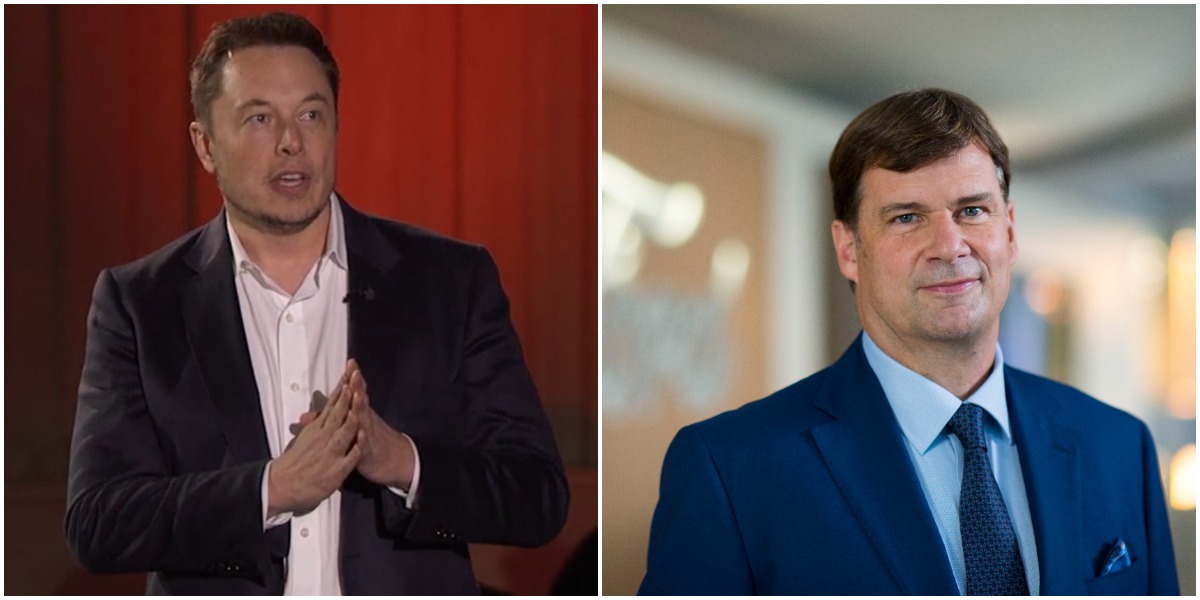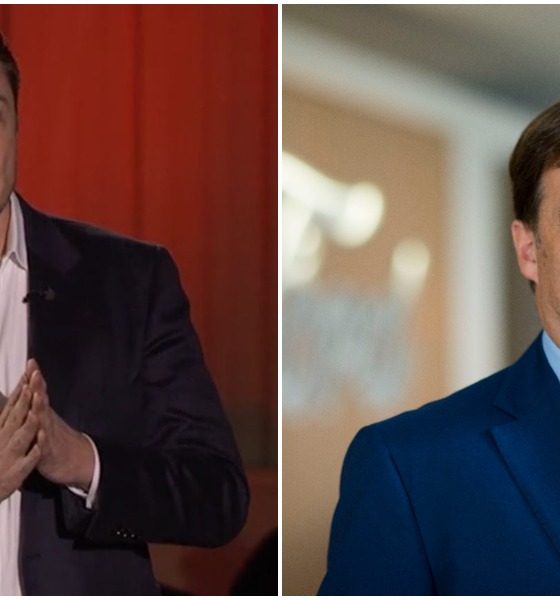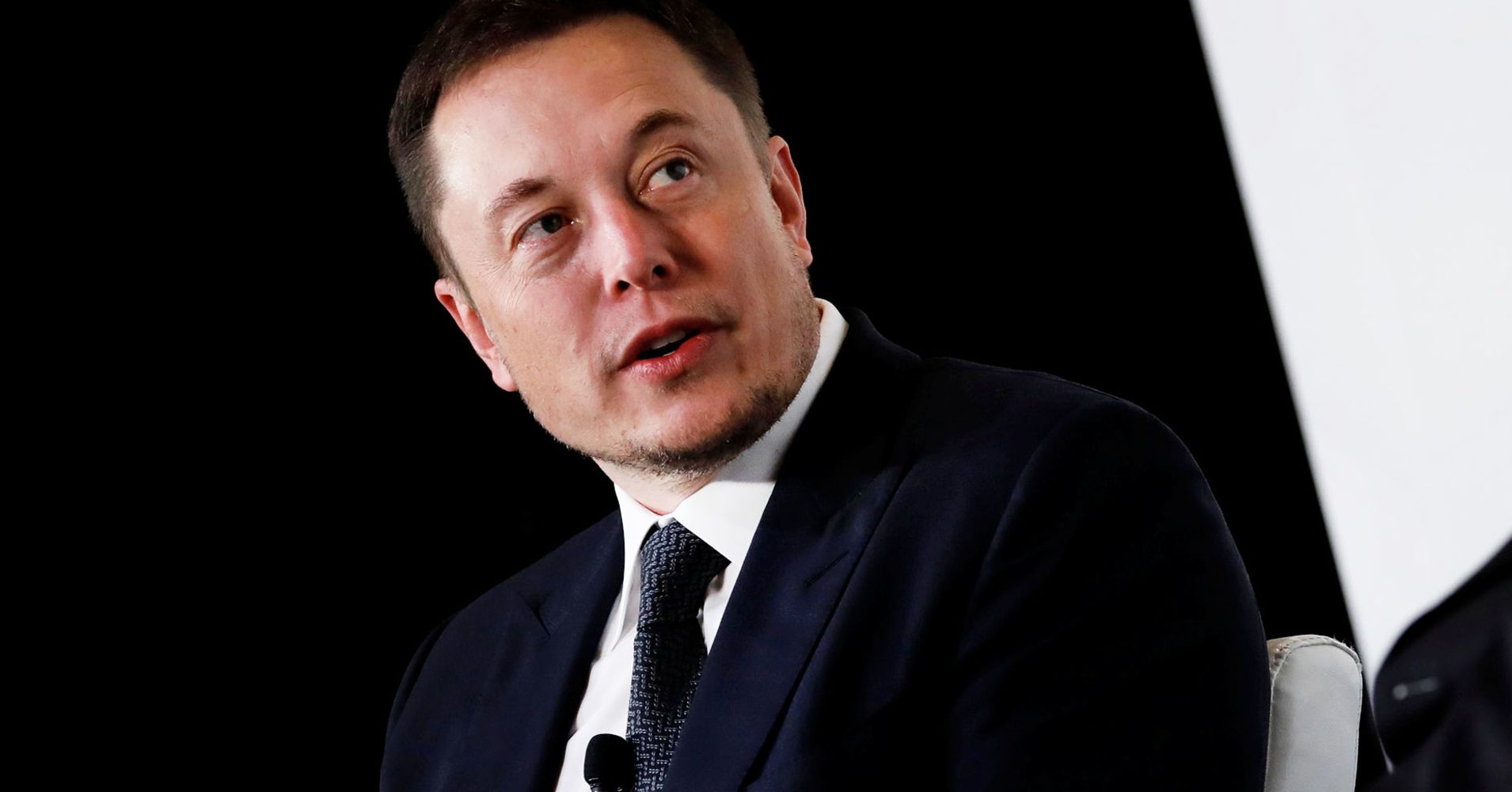

News
Nickel expert calls on Musk, Farley, others to demand Nickel sourcing in North America
Surging prices of nickel, a potentially major influence in the future of the global electric vehicle market, have encouraged one mining expert in the field to call on automotive CEOs to demand more attention toward sourcing the metal in North America.
Nickel and its appeal to EVs
Nickel has been a significant talking point of many automotive CEOs for about two years as its wide availability could alleviate battery manufacturing bottlenecks for cells containing either controversial or hard-to-obtain rare earth metals. Tesla CEO Elon Musk first discussed nickel mining during an Earnings Call in mid-2020. Musk pledged a massive contract to any company that could supply nickel to Tesla, as long as it was sourced efficiently and sustainably.
“Well, I’d just like to reemphasize, any mining companies out there, please mine more nickel, OK?” Musk said on the call. “Wherever you are in the world, please mine more nickel, and don’t wait for nickel to go back to some long — some high point that you experienced some five years ago or whatever. Go for efficiency, as environmentally friendly, nickel mining at high volume. Tesla will give you a giant contract for a long period of time if you mine nickel efficiently and in an environmentally sensitive way. So hopefully, this message goes out to all mining companies.”
Tesla CEO Elon Musk called on companies to mine more nickel, promising a “massive contract” during the Q2 2020 Earnings Call.
Musk eventually landed a nickel supply deal with Minnesota-based Talon Metals in January. It was the first major nickel supply deal Tesla landed and could be a monumental development in the production of EV battery cells.
Nickel increases energy density and therefore driving range, which is an essential metric for EV owners. Despite Elon Musk’s recent claim that too much EV range is counterproductive because it takes away from the performance, a small poll I ran on Twitter seemed to show that people were more concerned about range than performance. Two-thirds of respondents claimed they would sacrifice performance for more range. Despite Tesla’s high-range cars, which are only eclipsed by the Lucid Air’s premier Dream Edition trim, cold weather climates have shown to be one of EV range’s biggest foes, consistently trimming range estimations due to inefficient battery heating.
Soaring prices: $30k to $100k in the blink of an eye
Following a short squeeze on Nickel on the London Metals Exchange, the cost of a metric ton of the metal surged $70,000. Trent Mell, critical mineral expert and CEO of Electra Battery Materials, spoke to Teslarati last week regarding the price surges, which have him ready to make a proposal to automotive CEOs. “I would encourage the big names: Musk, Farley, Barra, to start demanding Nickel sourcing in North America,” Mell said.
According to Statista, Canada is the sixth-biggest producer of nickel globally, with 130,000 metric tons of the element produced in 2021. The United States ranked tenth on the list, with 18,000 metric tons. Mell believes, while North America has a low contribution rate to the global primary nickel supply, there is potential for extreme growth.
“North America currently only contributes around 4% of global primary nickel,” Mell said. “There is no immediate North American solution to growing nickel demand, but we anticipate that the construction of processing capacity on the continent will act as a catalyst to bring more primary nickel, in the form of mining operations, online in coming years so that North America can become increasingly self-reliant on domestically sourced raw materials. There are ample, good-quality nickel projects in North America.”
Nickel is highly-available in Russia, which has had numerous sanctions set by the United States and other governments due to the invasion of Ukraine. According to Mell, nickel in Russia, the third-most available region in the world, is Class 1, which means it is of the highest quality, which is eventually used in EV batteries, among other products. Mell said Nornickel, the country’s leading miner of the metal, exports 96 percent of its product, with 45 percent of that going to Europe.
(Credit: Teslarati) Data provided by Statista
Nickel is going to be a major factor in EV batteries in the coming years. However, automakers have had to adopt different strategies to keep their vehicles flowing off production lines and into customers’ garages. For standard range vehicles, many companies have adopted lithium-iron-phosphate, or LFP, batteries, which are available in wide supply in other markets and offer less range but more affordability. Tesla started transitioning some U.S. Standard Range Model 3 vehicles to LFP cells late last year, as it would reduce wait times. Eventually, it revealed all Standard Range vehicles would equip the LFP chemistry.
However, Mell does not believe LFP is a solution in the long term.
“We used to refer to LFP cells as ‘golf cart batteries,’” he said. Referring to the cell as a “half-hearted solution,” Mell understands the use of LFP for entry-level vehicles but knows nickel is the real solution, which led him to consider proposing industry-leading CEOs to push President Joe Biden to discuss more options in either domestic or, at least, North American mining projects.
Nickel is also easier to recycle and can be easily refined into new cells. Swedish company Northvolt successfully built a cell from recycled nickel last year.
What can consumers expect from the Nickel price hikes?
Mell is adamant that the current levels of nickel on the LME are not sustainable. “I would encourage consumers to wait about six months. Then we’ll see prices drop back to normal levels,” he said. However, as some analysts pointed out, the spikes in price could add between $750 and $1,000 per vehicle in the short term.
Musk said earlier this week that “significant inflationary pressure” was affecting both Tesla and SpaceX, which hinted toward price increases on the company’s vehicles. Last night, Tesla applied price increases to all four of its all-electric vehicles, with the Model X Plaid variant receiving the most substantial surge: $12,500.
I’d love to hear from you! If you have any comments, concerns, or questions, please email me at joey@teslarati.com. You can also reach me on Twitter @KlenderJoey, or if you have news tips, you can email us at tips@teslarati.com.

News
Nvidia CEO Jensen Huang explains difference between Tesla FSD and Alpamayo
“Tesla’s FSD stack is completely world-class,” the Nvidia CEO said.

NVIDIA CEO Jensen Huang has offered high praise for Tesla’s Full Self-Driving (FSD) system during a Q&A at CES 2026, calling it “world-class” and “state-of-the-art” in design, training, and performance.
More importantly, he also shared some insights about the key differences between FSD and Nvidia’s recently announced Alpamayo system.
Jensen Huang’s praise for Tesla FSD
Nvidia made headlines at CES following its announcement of Alpamayo, which uses artificial intelligence to accelerate the development of autonomous driving solutions. Due to its focus on AI, many started speculating that Alpamayo would be a direct rival to FSD. This was somewhat addressed by Elon Musk, who predicted that “they will find that it’s easy to get to 99% and then super hard to solve the long tail of the distribution.”
During his Q&A, Nvidia CEO Jensen Huang was asked about the difference between FSD and Alpamayo. His response was extensive:
“Tesla’s FSD stack is completely world-class. They’ve been working on it for quite some time. It’s world-class not only in the number of miles it’s accumulated, but in the way it’s designed, the way they do training, data collection, curation, synthetic data generation, and all of their simulation technologies.
“Of course, the latest generation is end-to-end Full Self-Driving—meaning it’s one large model trained end to end. And so… Elon’s AD system is, in every way, 100% state-of-the-art. I’m really quite impressed by the technology. I have it, and I drive it in our house, and it works incredibly well,” the Nvidia CEO said.
Nvidia’s platform approach vs Tesla’s integration
Huang also stated that Nvidia’s Alpamayo system was built around a fundamentally different philosophy from Tesla’s. Rather than developing self-driving cars itself, Nvidia supplies the full autonomous technology stack for other companies to use.
“Nvidia doesn’t build self-driving cars. We build the full stack so others can,” Huang said, explaining that Nvidia provides separate systems for training, simulation, and in-vehicle computing, all supported by shared software.
He added that customers can adopt as much or as little of the platform as they need, noting that Nvidia works across the industry, including with Tesla on training systems and companies like Waymo, XPeng, and Nuro on vehicle computing.
“So our system is really quite pervasive because we’re a technology platform provider. That’s the primary difference. There’s no question in our mind that, of the billion cars on the road today, in another 10 years’ time, hundreds of millions of them will have great autonomous capability. This is likely one of the largest, fastest-growing technology industries over the next decade.”
He also emphasized Nvidia’s open approach, saying the company open-sources its models and helps partners train their own systems. “We’re not a self-driving car company. We’re enabling the autonomous industry,” Huang said.
Elon Musk
Elon Musk confirms xAI’s purchase of five 380 MW natural gas turbines
The deal, which was confirmed by Musk on X, highlights xAI’s effort to aggressively scale its operations.

xAI, Elon Musk’s artificial intelligence startup, has purchased five additional 380 MW natural gas turbines from South Korea’s Doosan Enerbility to power its growing supercomputer clusters.
The deal, which was confirmed by Musk on X, highlights xAI’s effort to aggressively scale its operations.
xAI’s turbine deal details
News of xAI’s new turbines was shared on social media platform X, with user @SemiAnalysis_ stating that the turbines were produced by South Korea’s Doosan Enerbility. As noted in an Asian Business Daily report, Doosan Enerbility announced last October that it signed a contract to supply two 380 MW gas turbines for a major U.S. tech company. Doosan later noted in December that it secured an order for three more 380 MW gas turbines.
As per the X user, the gas turbines would power an additional 600,000+ GB200 NVL72 equivalent size cluster. This should make xAI’s facilities among the largest in the world. In a reply, Elon Musk confirmed that xAI did purchase the turbines. “True,” Musk wrote in a post on X.
xAI’s ambitions
Recent reports have indicated that xAI closed an upsized $20 billion Series E funding round, exceeding the initial $15 billion target to fuel rapid infrastructure scaling and AI product development. The funding, as per the AI startup, “will accelerate our world-leading infrastructure buildout, enable the rapid development and deployment of transformative AI products.”
The company also teased the rollout of its upcoming frontier AI model. “Looking ahead, Grok 5 is currently in training, and we are focused on launching innovative new consumer and enterprise products that harness the power of Grok, Colossus, and 𝕏 to transform how we live, work, and play,” xAI wrote in a post on its website.
Elon Musk
Elon Musk’s xAI closes upsized $20B Series E funding round
xAI announced the investment round in a post on its official website.

xAI has closed an upsized $20 billion Series E funding round, exceeding the initial $15 billion target to fuel rapid infrastructure scaling and AI product development.
xAI announced the investment round in a post on its official website.
A $20 billion Series E round
As noted by the artificial intelligence startup in its post, the Series E funding round attracted a diverse group of investors, including Valor Equity Partners, Stepstone Group, Fidelity Management & Research Company, Qatar Investment Authority, MGX, and Baron Capital Group, among others.
Strategic partners NVIDIA and Cisco Investments also continued support for building the world’s largest GPU clusters.
As xAI stated, “This financing will accelerate our world-leading infrastructure buildout, enable the rapid development and deployment of transformative AI products reaching billions of users, and fuel groundbreaking research advancing xAI’s core mission: Understanding the Universe.”
xAI’s core mission
Th Series E funding builds on xAI’s previous rounds, powering Grok advancements and massive compute expansions like the Memphis supercluster. The upsized demand reflects growing recognition of xAI’s potential in frontier AI.
xAI also highlighted several of its breakthroughs in 2025, from the buildout of Colossus I and II, which ended with over 1 million H100 GPU equivalents, and the rollout of the Grok 4 Series, Grok Voice, and Grok Imagine, among others. The company also confirmed that work is already underway to train the flagship large language model’s next iteration, Grok 5.
“Looking ahead, Grok 5 is currently in training, and we are focused on launching innovative new consumer and enterprise products that harness the power of Grok, Colossus, and 𝕏 to transform how we live, work, and play,” xAI wrote.








